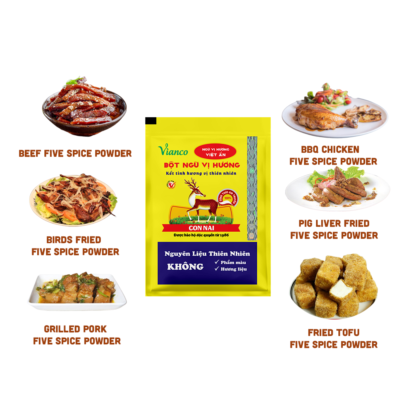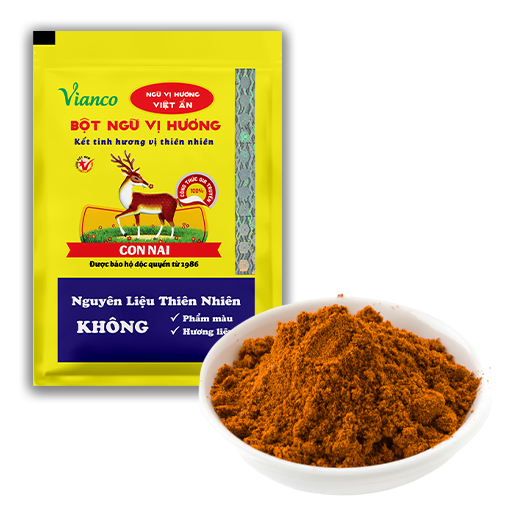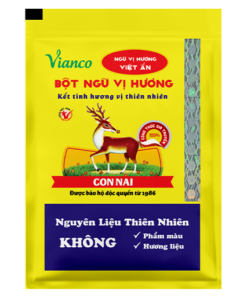No products in the cart.
“DEER BRAND” FIVE SPICE POWDER 10GR
6.500₫ – 32.500₫
Ingredients: Star Anise, Cinnamon, Fennel, Ginner, Dried Chilli, Cloves, Szechuan pepper, nutmeg
Safety warning: Please do not use if you have an allergy to these ingredients.
Storage instruction: Store in a cool and dry place, away from direct sunlight.
Over half of century-more 65 years on from our humble beginnings, ”Deer Brand” Five Spice Powder maintains our core values; using natural spices to create rich flavors that will lead to lasting memories of joy for all families.
“Deer Brand” Five-Spice Powder has always been the trusted choice of many housewives in Vietnam.

Features
The composition of this powder is not the same in each recipe. It possibly includes some plants:
- Peppercorns
- Cinnamon (Cinnamon Aromaticum)
- Anise (Illicium Verum) or Star Anise
- Cloves (Syzygium Aromaticum)
- Fennel seeds (Pimpinella Anisum)
Another concoction could also be used such as cinnamon, peppers, cloves, and anise. It is used in roasting, stewing, and making curries.
Having good ingredients for health like cinnamon, which helps stimulate digestion, warm the belly, relieve pain, and improve the immune system. Help to create a dish of sufficient natural spices: salty, bitter, spicy, sour, and sweet. Also used for vegetarian dishes.
Usage
“Deer Brand” Five-Spice Powder is specialized to cook grilled dishes, stir-fried dishes, and roasted meats, stew, … Boosts flavor and aroma for dishes. Also used for producing moon cakes.
Recipe
- Cooking instructions: 2 teaspoons “Deer Brand” Five-Spice Powder (10gr) = 500 grams of meat. “Deer Brand” Five-Spice Powder is used to marinate roast duck, roast pork, and beef offal, pork offal.
- Can be used to marinate wild meat, pork intestines, cows, goats, fake civets, etc. to help make the taste special. “Deer Brand” Five-Spice Powder is also used to make moon cakes.

“Deer Brand” Five-Spice Powder is specialized to cook grilled dishes, stir-fried dishes, and roasted meats, stew, … Boosts flavor and aroma for dishes. Also used for producing moon cake.
Having good ingredients for health like cinnamon, which helps stimulate digestion, warm the belly, relieve pain, improve the immune system. Help to create a dish of sufficient natural spices: salty, bitter, spicy, sour, sweet. Also used for vegetarian dishes.
Store in a cool and dry place, away from direct sunlight.
| Weight | 0.06 kg |
|---|---|
| Dimensions | 12 × 8 × 0.5 cm |
| Phân loại | 1 pack, Combo 3 pack, Combo 5 pack |
Be the first to review ““DEER BRAND” FIVE SPICE POWDER 10GR” Cancel reply
You must be logged in to post a review.


 Tiếng Việt
Tiếng Việt


















Reviews
There are no reviews yet.